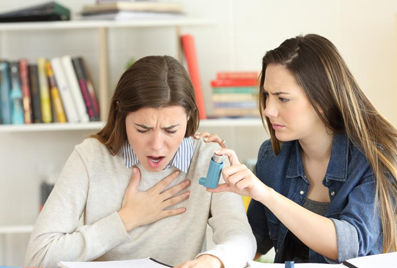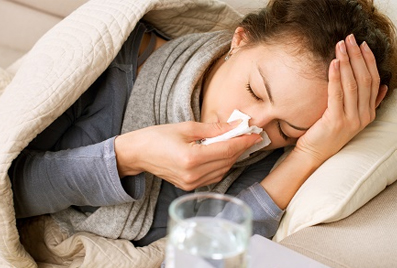Dyspnea
What is Dyspnea?
Dyspnea, also referred to as shortness of breath, is a situation where you cannot breathe properly or take in enough air to your lungs. It is often described as ‘air hunger’ and can range from mild and temporary to a severe and long-term issue.
Shortness of breath can be an underlying symptom of various heart and lung diseases. Even if it can happen after a workout or other intense physical activity, prolonged dyspnea is not to be overlooked.
What are the causes of Dyspnea?
A case of dyspnea can be a result of an intense workout, trekking an inclined path, or going through a drastic temperature change. However, dyspnea can be a result of other medical conditions.
Some of the common causes of dyspnea are:
-
Asthma
-
Chronic obstructive pulmonary disease (COPD)
-
Heart disease
-
Anxiety
-
Choking
-
Allergic reactions
-
Collapsed lung
-
Low blood pressure
-
Sudden blood loss
-
Pneumonia
Chronic dyspnea occurs when someone is experiencing shortness of breath for over a month. It can be an underlying cause of long-term conditions like:
-
Chronic COPD
-
Lung cancer
-
Obesity
-
Heart disease
-
Interstitial lung disease
-
Fluid in the chest
What are the symptoms of Dyspnea?
Over-exertion or medical conditions are the causes of dyspnea. Acute dyspnea may last for a few minutes or an hour. Whereas chronic dyspnea disrupts your daily activities as you go out of breath just by walking from room to room.
Some symptoms of dyspnea include:
-
Tightness of chest
-
Choking
-
Suffocated
-
Shallow breathing
-
Wheezing
-
Coughing
-
Heart palpitations
Diagnosis of Dyspnea
There is no single test to diagnose dyspnea. Your physician may conduct a complete physical exam and study your symptoms, experiences, severity, and the frequency of dyspnea to diagnose the condition.
The first step of diagnosis is often a chest x-ray or a CT scan, followed by a lung function test to measure the airflow and lung capacity. Other tests that help diagnose dyspnea are:
-
Blood tests
-
Pulse oximetry
-
Electrocardiogram (EKG)
-
Physical evaluation
Treatment for Dyspnea
The treatment for dyspnea is not focused on the condition but on the underlying cause. Treatment for shortness of breath due to overexertion, COPD, asthma, pneumonia, and anxiety differ drastically.
Your physician may suggest breathing exercises, relaxation methods, and a proper diet to treat causes like obesity and anxiety. In the case of COPD and lung diseases, pulmonary rehabilitation is effective in overcoming the symptoms of dyspnea. Cardiac rehabilitation is a treatment method for dyspnea in case of heart failure or other heart conditions.



